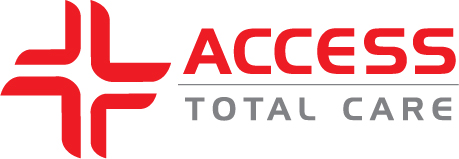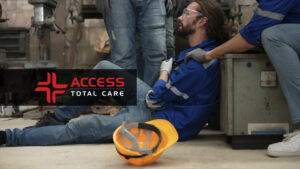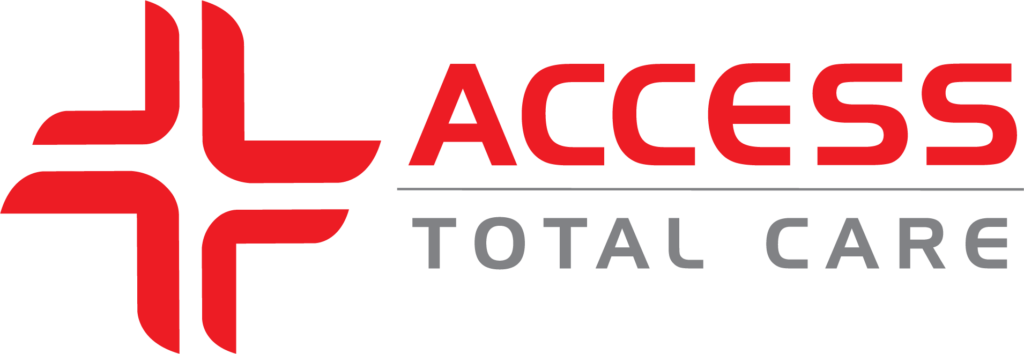Workplace injuries are an unfortunate reality for many, with accidents ranging from minor incidents to more serious situations.
Whether it’s a slip, trip, fall, or strain while lifting heavy objects, these incidents can happen suddenly and unexpectedly. However, how individuals handle these injuries can significantly impact the outcome for the injured person. This is where urgent care facilities play a crucial role, offering quick assistance and expert medical care to address workplace injuries effectively.
Common Workplace Injuries
Employees are often exposed to various hazards that can lead to injuries. Understanding the common types of workplace injuries is essential for promoting safety and preventing accidents. Here are some of the most prevalent workplace injuries:
- Slips, Trips, and Falls: Wet floors, cluttered walkways, and uneven surfaces are big risks. These hazards can cause serious injuries. They include fractures, sprains, and head trauma. They come from spilled liquids left too long and obstacles left in high-traffic areas.
- Cuts and Lacerations: In industries with sharp tools, equipment, or machinery, cuts and lacerations are common due to improper handling, lack of safety guards, or inadequate training.
- Musculoskeletal Injuries: Caused by overexertion, repetitive motions, and bad lifting techniques. They can lead to strains and sprains. Employees get hurt by lifting heavy objects without proper techniques. They also get hurt by doing repetitive tasks without enough breaks. These injuries cause pain and discomfort.
- Burns: Employees who work with hot surfaces, chemicals, or flames are at risk of getting burnt in the workplace. Mishandling hot objects, not using protective gear or inadequate training in handling dangerous materials can cause burns. The burns can be of different severity. It is essential to exercise caution and follow proper safety measures to prevent such incidents from occurring.
- Impact Injuries: Employees sustain impact injuries when objects strike or collide with them in the workplace. This can happen due to falling objects. It can also happen from collisions with moving equipment or accidents with vehicles or machinery. Impact injuries can be minor, like bruises. Or, they can be more severe, like fractures or organ damage.
Benefits of Urgent Care
When workplace injuries occur, fast and good medical care is essential. It ensures the best outcomes for employees. Here are some key benefits of seeking care at urgent care centers for workplace injuries:
- Immediate Access: Urgent care centers offer walk-in appointments and extended hours. They ensure that employees can get quick medical attention without an appointment.
- Expertise in Injury Management: Urgent care providers are experts at diagnosing and treating many injuries. These range from minor cuts and bruises to serious conditions like fractures and dislocations.
- Comprehensive Services: Urgent care centers offer many services. These include X-rays, lab tests, and minor surgeries. They let patients get complete care in one convenient place. This removes the need for multiple appointments at different healthcare facilities. It saves time and reduces inconvenience for employees.
- Cost-Effectiveness: Visiting an urgent care center for non-life-threatening injuries is often cheaper than going to the emergency room. It helps employees save money on healthcare expenses. Also, many urgent care centers accept many insurance plans. This makes care cheaper and easier for employees.
- Coordination with Employers: Urgent care providers can work closely with employers. They can do this to ensure that employees get appropriate follow-up care and accommodations. This collaboration promotes continuity of care. It helps employees return to work safely and efficiently.
On-Site Workplace Injury Management
In addition to seeking medical care at urgent care facilities, employers play a crucial role in managing workplace injuries on-site. Here are some key steps for on-site workplace injury management:
- Designate Trained First Aid Responders: Employers should choose employees trained in basic first aid and CPR to serve as first aid responders in case of a workplace injury.
- Maintain Well-Equipped First Aid Kits: Workplaces need to have well-equipped first aid kits readily available in accessible locations throughout the premises. The kits should contain essential items. These include bandages, gauze pads, adhesive tape, antiseptic wipes, scissors, and gloves. They are for treating a variety of injuries.
- Establish Clear Reporting Procedures: Employers should do this for workplace injuries. It ensures that incidents are promptly documented and addressed. Employees should know how to report injuries and accidents to their supervisors or designated safety personnel.
- Assess and Stabilize Injured Employees: When a workplace injury occurs, first aid responders should assess the injured employee’s condition and provide appropriate initial treatment. This may include controlling bleeding, immobilizing injured limbs, or providing CPR if necessary.
- Coordinate Transport to Medical Facilities: Employers should arrange transportation to urgent care or hospitals when employees need medical care. This may involve calling 911. Or arranging for rides in company vehicles or with designated drivers. Services or arranging for transportation via company vehicles or designated drivers.
- Follow-up and Documentation: After the first treatment of a workplace injury, employers should follow up with the injured employee. They should do this to ensure their well-being and recovery progress. Also, thorough documentation of the incident is essential. This includes witness statements, injury reports, and medical records.
Return-to-Work Protocols for Workplace Injuries
Once an employee has received initial medical treatment for a workplace injury, clear return-to-work protocols are essential. They will help the employee return to work safely and quickly. Here are the key components of effective return-to-work protocols:
- Medical Clearance: Before an employee can return to work after a workplace injury, they should get medical clearance from a healthcare provider.
- Functional Capacity Evaluation (FCE): In some cases, an employer may do an FCE to assess an employee’s physical abilities and limits.
- Transitional Duty Assignments: Employers may offer transitional duty assignments if an employee is unable to do their regular job due to injury. These assignments accommodate their temporary limitations.
- Communication and Collaboration: Effective communication between employers, employees, and healthcare providers is essential throughout the return-to-work process. Employers should keep lines of communication open with injured employees. They should give them updates on work matters and offer support as needed.
- Accommodations and Modifications: Employers may need to make changes to the workplace or job duties. These changes are to help disabled or temporarily limited employees.
- Rehabilitation Services: Professionals may recommend services like physical therapy or occupational therapy.
- Follow-Up Monitoring: After an employee returns to work, it’s important to monitor their progress and well-being closely. Employers should check in often with employees. They should do so to ensure that the employees are adjusting to their duties. They should also do so to address any concerns or issues.
Workplace Injury Help at Access Total Care
In conclusion, managing workplace injuries well needs a proactive approach. Both bosses and workers must act. Workplaces can reduce accidents. They can do this by understanding common hazards, using safety measures, and having clear injury protocols. This will create a safe and healthy environment for all employees.
If you or someone you know has experienced a workplace injury, don’t hesitate to seek medical attention at Access Total Care. Our experienced healthcare providers are here to help you get back on your feet and back to work as quickly as possible. Visit our website or contact us today to learn more about our urgent care services and how we can assist you with your workplace injury management needs.




















